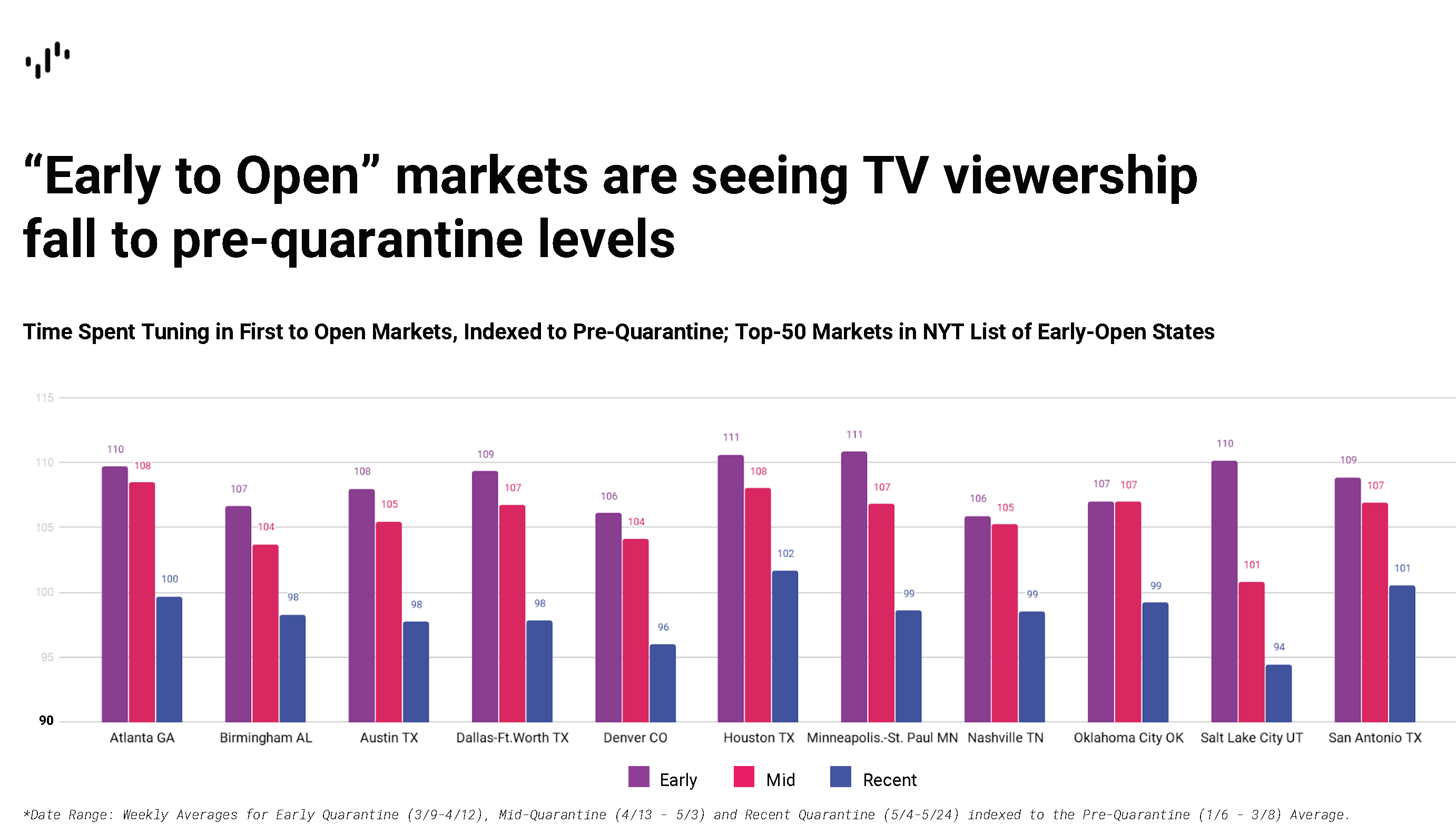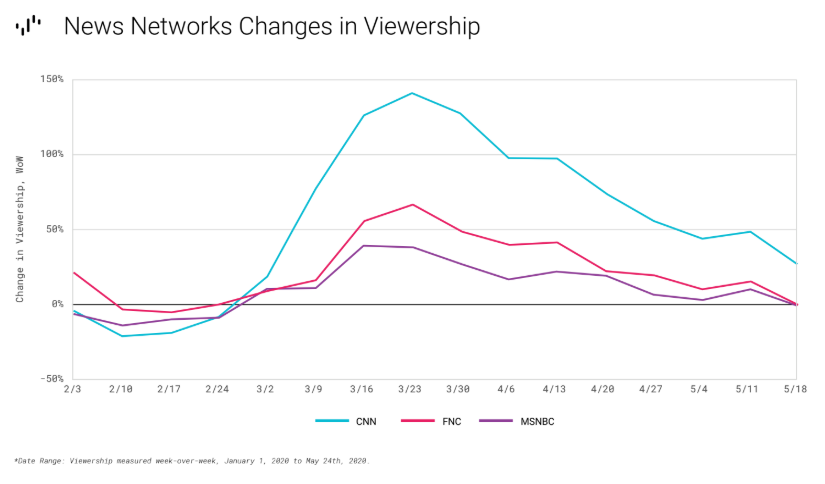Broadcast, Cable Viewing Back to Pre-COVID Levels
Streaming use remains elevated, VideoAmp said

Viewing of broadcast and cable TV, which spiked as people stayed home to slow the spread of COVID-19, is dropping back to pre-quarantine levels as more states reopen for business, according to new data from VideoAmp.
App-based over-the-top streaming viewing remains higher.

Looking at the top 50 markets in states that re-opened in early May, such as Dallas, Denver, Houston, Birmingham, Nashville and Oklahoma City, VideoAmp found viewership peaking during the “early quarantine period” from March 9 to April 12, coming down some in the “mid-quarantine period” from April 13 to May 3 then tumbling during the “recent quarantine period” from May 4 to May 24 to levels slightly lower than the pre-quarantine period in January and February.
“We saw that when quarantine started, linear TV went up on the order of 18% to 20%," said VideoAmp chief measurability officer Josh Chasin, noting that app based tune-in went up more than twice that.
“Over time, linear has come back to earth. App-based tuning has not,” Chasin said. “Obviously there’s been a migration to streaming to app-based tuning,” he said adding that cord cutting has accelerated, fed by the increase in unemployment.
Cities in states that were still partially closed showed smaller drops in viewing and were still as much as 7% above pre-quarantine levels. Those included New York, Chicago, Boston Detroit, Philadelphia, Washington, D.C. and Cleveland.
Many of those cities are among those showing the biggest gains in this “recent quarantine” period. The largest gains were seen in Laredo, Texas; Alpena, Mich., Glendive, Mont.; Detroit; New York, Miami and Baltimore.
Broadcasting & Cable Newsletter
The smarter way to stay on top of broadcasting and cable industry. Sign up below
Three of the four markets showing the biggest declines in the "recent quarantine” period are in San Angelo, Texas, followed by Alaskan cities Juneau, Fairbanks and Anchorage.
Chasin noted that one of the few dayparts not to rise during quarantine were during the weekends, when sport viewing boosts ratings. Without sports, VideoAmp clients wanted to know how to reach those sports viewers.
“I wish I could tell you they’ve all picked themselves up and deposited themselves handily in one place. But what really seems to have happened is they have scattered,” Chasin said. News and information programming gained, but so did female oriented networks.
“We think what is happening is sports fans ceded control of the remote in the households,” he said. “With no game on, ‘they’re asking ‘honey, what do you want to watch?’”
News viewing is down from its spike in March, VideoAmp said. Viewing for CNN remains above its pre-quarantine level, but Fox News and MSNBC are back to where they were before the crisis swelled.

Among all networks during the recent quarantine period, smaller, specialty networks showed the biggest gains compared to the pre-quarantine period. At the top of the list were Discovery’s GAC, DIY, Destination America and American Heroes Channel. Also showing gains of 45% or more were CMT, FYI, Up, Sundance and CNN.
"We’re all waiting with bated breath waiting for sports to come back. I think viewers are voracious for some live sports, as are the advertisers,” Chasin said. “We also want to see what happens when [the networks] start running out of new content.”
Jon has been business editor of Broadcasting+Cable since 2010. He focuses on revenue-generating activities, including advertising and distribution, as well as executive intrigue and merger and acquisition activity. Just about any story is fair game, if a dollar sign can make its way into the article. Before B+C, Jon covered the industry for TVWeek, Cable World, Electronic Media, Advertising Age and The New York Post. A native New Yorker, Jon is hiding in plain sight in the suburbs of Chicago.

